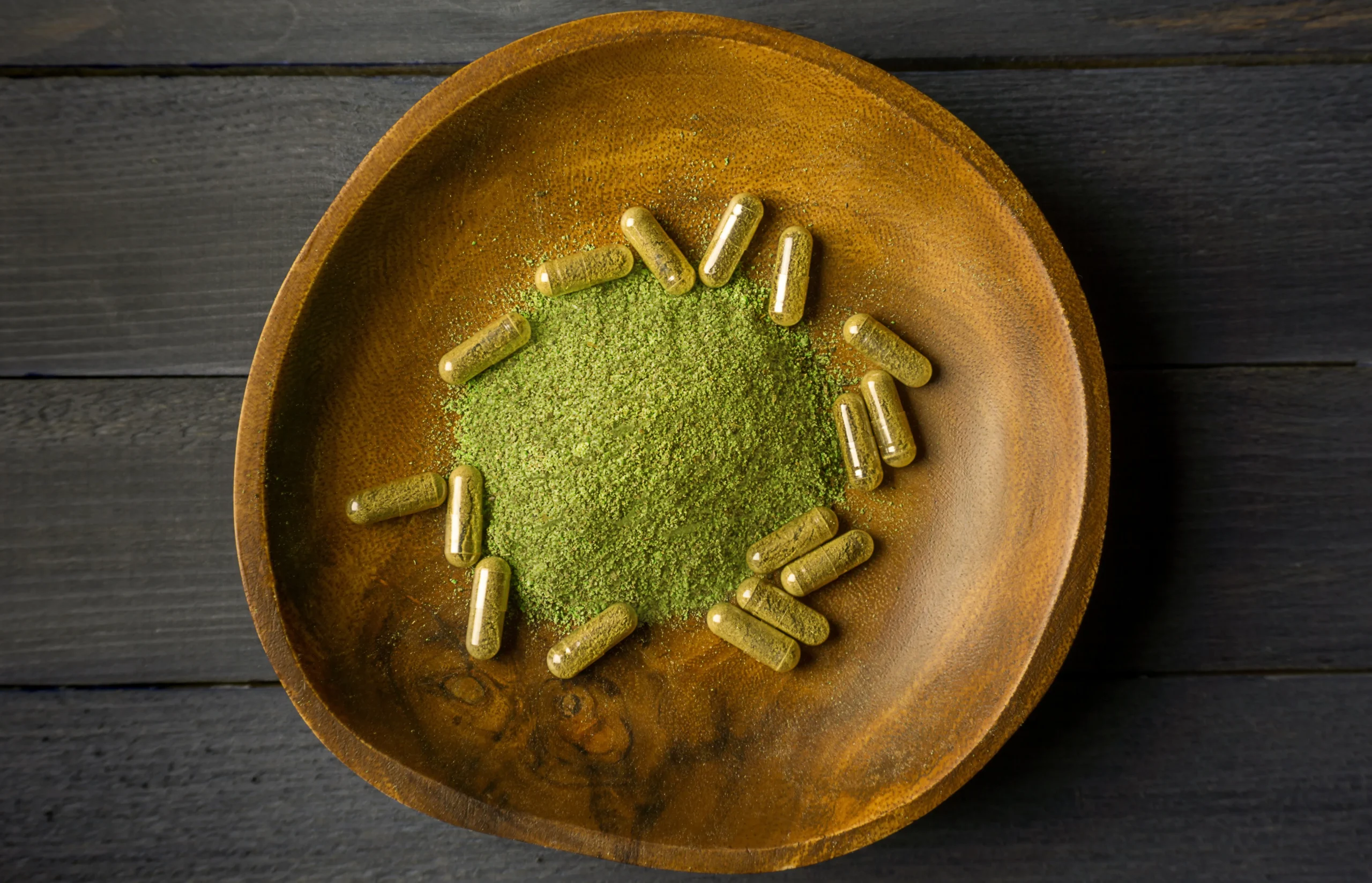- 4 Oct 2025

Kratom, derived from the Mitragyna speciosa tree native to Southeast Asia, has stirred ongoing debates in the U.S. over its legal status. Popular for its potential to relieve pain, improve mood, and combat opioid withdrawal symptoms, Kratom exists in a legal gray area. As of 2025, its status remains highly state-dependent, with federal oversight increasing and public interest growing.
In this article, we’ll break down the current legal status of Kratom in the U.S., how it’s regulated by different states, potential changes in federal law, and what users need to keep in mind this year.
Kratom is a natural herb that interacts with opioid receptors in the brain. While low doses produce stimulating effects, higher doses can result in sedative, opioid-like experiences. The active alkaloids—mitragynine and 7-hydroxymitragynine—are responsible for Kratom’s effects.
Used traditionally in Southeast Asia for centuries, Kratom is often consumed as a tea, capsule, or powder. In the U.S., it’s marketed as a dietary supplement, though the FDA has not approved it for medical use.
As of 2025, Kratom remains legal at the federal level, but it is not without scrutiny. The U.S. Food and Drug Administration (FDA) and the Drug Enforcement Administration (DEA) have both raised concerns regarding its safety and potential for abuse.
In 2016, the DEA attempted to classify Kratom as a Schedule I drug, which would place it alongside heroin and LSD. However, due to significant public backlash, the move was withdrawn. Despite this, the DEA continues to monitor Kratom, and the FDA has issued import alerts and warnings against its use. For more on FDA positions, visit the FDA’s official resource.
The legality of Kratom in the U.S. is highly fragmented. Here’s an updated overview for 2025:
California (except San Diego)
Florida (except Sarasota County)
New York
Texas
Georgia
Oregon
Colorado (except some local bans)
Alabama
Arkansas
Indiana
Rhode Island
Vermont
Wisconsin
Arizona, Utah, and Georgia have passed a Kratom Consumer Protection Act (KCPA) to regulate sales, requiring proper labeling and banning adulterated products.
Each year, new legislation is proposed that could impact access. Users should keep up with state laws on Kratom for the most accurate and current information.
One of the most promising developments in the Kratom legal landscape is the Kratom Consumer Protection Act. This legislation aims to regulate Kratom rather than ban it, focusing on:
Age restrictions (typically 18+)
Prohibiting adulterated or contaminated products
Labeling transparency
Laboratory testing requirements
As of 2025, over a dozen states have either passed or are actively considering adopting the KCPA, providing a framework to ensure consumer safety while maintaining access.
Learn more about regulatory protections by visiting our guide on the benefits of KCPA for users.
Despite growing support for regulation, Kratom remains under threat due to:
Limited research on long-term safety
Reports of adverse effects when mixed with other substances
FDA pressure to remove it from market shelves
Inconsistent product quality in an unregulated market
With ongoing clinical trials and public advocacy from groups like the American Kratom Association (AKA), there’s a push to generate more scientific backing and responsible use standards.
If you’re using or considering Kratom in 2025, here are key points to keep in mind:
Check local laws: Even if federally legal, your city or county may restrict sales.
Buy from trusted vendors: Choose companies that offer third-party lab testing and adhere to KCPA guidelines.
Stay informed: Laws are shifting. Subscribe to newsletters or alerts from organizations like American Kratom Association.
Be responsible: Avoid combining Kratom with alcohol or prescription medications without consulting a healthcare provider.
Kratom’s legal status in the U.S. remains fluid in 2025. While federally unbanned, the herb faces a patchwork of state regulations and increasing federal attention. The passage of the Kratom Consumer Protection Act in several states marks a positive step toward safe, legal access.
As science and public advocacy continue to shape the conversation, users must remain vigilant, informed, and proactive in protecting their rights and health.